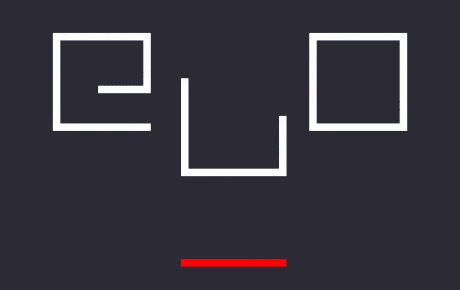Cityscapes is an exploration of how to integrate e-poetry into the realm of social and urban poetics. This work began to germinate in 2002 during my artist's residency in Tokyo at the time. Immersed in a world of moving/electronic signs, ever changing, flickering and in flux, I wanted to be able to reproduce this experience of linguistic signs devoid of semantic meaning –as a non Japanese reader- and consequently transform them into textual images, by use of digital technologies. I became excited by the idea of a new calligram, the calligram of the city, and how this would change from city to city; what poetics every city would offer?In western culture, the realm of media and advertising has absorbed the language of Visual Poetry, and calligrams have become another official way to engage people in the selling of their products. Reciprocally poetry has also been influenced by this exchange and has moved to other domains away from the page and into the public display. My interest therefore, was to use the language of advertising to create poetic/artistic public work in urban spaces and in so doing to explore the new calligram, that of social poetics, of the neon lights, flickering letters, moving messages and public textualities of city environments. I had the opportunity to go to Melbourne, Australia, and put this idea into practice. Research ProcessThe multicultural characteristic of Melbourne prompted me to enquire into this calligram of natural language sounds , the visual/textual signs from many different cultures encountered in the city as one walks around, the reasons for this diversity of cultures, why immigrants move to other places* how these cultures evolve and mix and the idea of interactivity between the many cultures and the city. It became a new calligram, which engendered a poetic space of the language of intercultural exchange ; of travelling words (to other languages) and the 'in-between' communicative area generated by the visual and audible qualities of these forms and with the recurrent question of how Image-Sound-Text interlace to create new languages. This new kinetic, nomadic, ever-changing calligram of the city became that of broken human voices, fragmented realities and the composition of different languages encountered in these cityscapes in flux.Extracting visual text from the city environment, deconstructing it and re-mapping it into a different context has been part of the process of this investigation and creation of the digital piece. I worked with cultural community groups to gather and develop soundscapes from their natural languages in the form of phonetic sounds. As there are more than a hundred and forty languages spoken in Melbourne, I chose some of the most prominent ones. The languages included in the project are: Greek, Italian, Vietnamese, Chinese, Hebrew, Arabic, English, Spanish, Hindi and the aboriginal language Wathawurrung. The last one, being a language, which used to be spoken in Melbourne and currently taught to children by Bruce Pascoe with the hope of bringing it back to life. I documented the groups participating with the sounds and walked around, reading the city: visually, textually and phonetically.Interface LayoutIt is about the process of exploring and creating. It consists of a blank screen and it is not until the participant begins to explore, that the work exists. This is a concept I enjoy in digital works as I find it, as a user, to be both provocative and inviting to get involved in the performing of the artwork. The performance of the user with the piece is produced by rolling the mouse. As the user explores the surface, the palettes (images of Melbourne, animations, interactive scrolls, sounds, transitions) appear, and, by dragging, image size manipulation and roll over of the mouse, the user can create sound and image compositions. The more exhaustive the exploration, the more intrinsic the compositions which can be produced. It simulates the process of my investigation, in the way of finding images and sounds in the city, appropriating them and creating compositions. Participants are invited to do the same, to explore the city, producing, editing, in a word; creating.(Source: Author's description from her site)
Cityscapes: Social Poetics / Public Textualities
Source Database:
ELMCIP
Source Entry URL:
Source Entry OAI-PMH Identifier:
oai:elmcip.net:2339
Source Entry Language(s):
English
Description(s):







